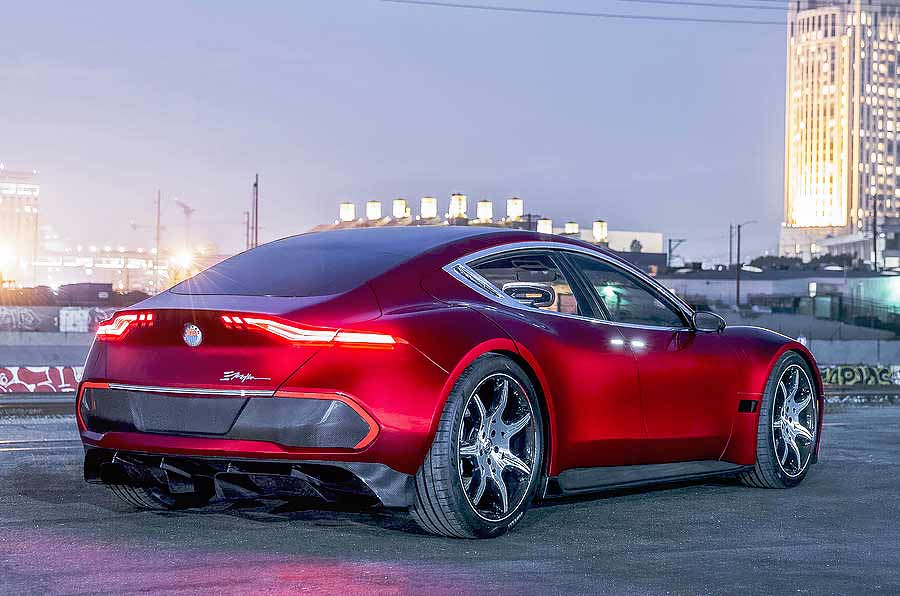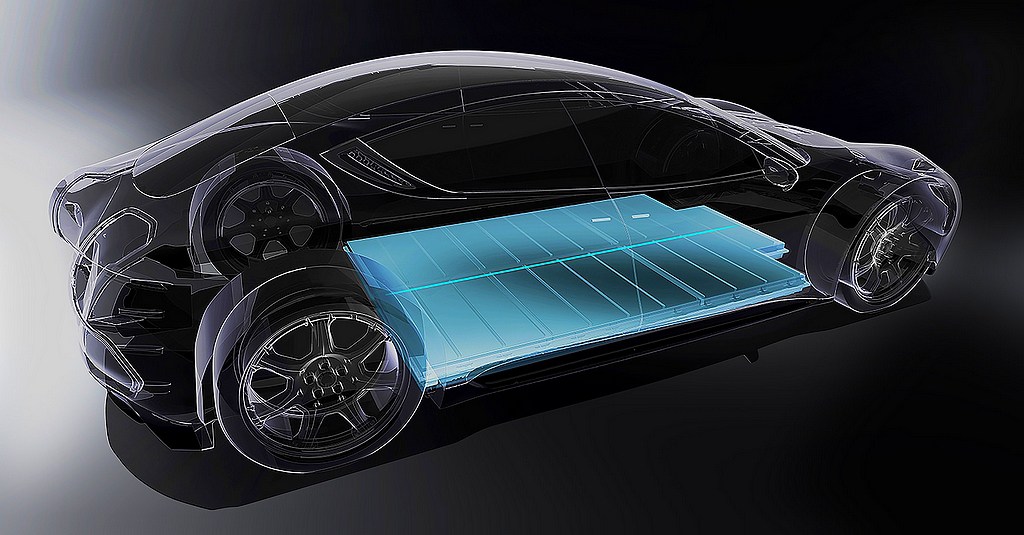Fisker’s electric ambitions recharged. Is electrification the future of the supersaloon? We look ahead to the most exciting new model launches of 2018 and kick off our 20th anniversary celebrations. The new electric EMotion is only part of Fisker’s return: it’s also working on tomorrow’s battery technology. Text and photos by Antony Ingram.
Remember Fisker? If you do, it’s probably for the wrong reasons. Its brief but turbulent history resulted in one relatively unsuccessful luxury saloon, the electric Karma, a couple of concepts and an unhealthy quantity of malaise.

Production Karmas suffered build quality issues, but the worst was yet to come: Fisker’s battery supplier went into administration causing build delays, and when Hurricane Sandy hit the US east coast in 2012 – destroying hundreds of vehicles waiting at port – the company’s insurer refused to pay up.
Like Sideshow Bob stepping from rake to rake, founder Henrik Fisker then left the company in early 2013 and redundancies at Fisker soon followed, the firm finally filing for bankruptcy in late 2013. Chinese firm Wanxiang Group later bought the rights and tooling to the Karma and started offshoot Karma Automotive.

It’s hard to keep a driven man down though, and Henrik Fisker returned in late 2016 with the eponymous Fisker Inc. and its first product: the EMotion. Even sleeker than the Karma and with a claimed, all-electric range of 400 miles, it finally looked like Fisker had a car to beat Tesla Motors at its own game.
And then it all went quiet, until the Consumer Electronics Show in Las Vegas in early January. Henrik Fisker, Fisker Inc. and the EMotion are back, but the car itself is almost secondary to the proprietary battery technology Fisker is working on behind the scenes.
Together with battery specialist Sakti3, Fisker is working on new solid-state battery technology that could lead to a massive leap in both range and recharging speed in future electric cars.
Sakti3 – an American company recently acquired by Dyson, itself also working on an electric car – already holds patents in the solid state battery field, and the latest describes a battery with 2.5 times the energy density of existing lithium-ion batteries yet a third cheaper (based on predictions for prices and tech).
The latest tech is also claimed by Fisker to side-step some current issues with solid-state technology, including low electrode current density, limited working temperature ranges, low power and limited materials availability. Solidstate electrodes within the new battery are said to have 25 times the surface area of existing thin-film solid state electrodes, and very high electronic and ionic conductivity – a combination, Fisker claims, that allows for fast charging and strong cold temperature operation.
How fast? In theory, enough to supply a full charge of 500 miles in just one minute. It’s a figure we’re taking with a whole mine’s worth of salt until we’ve seen it demonstrated in the real world. Charging infrastructure itself may not yet be suitable for delivering such a charge, but if the figures actually turn out to be correct, then they’ll be transformative for electric transportation.
Fisker says the technology should be commercialised in automotive applications by around 2023, but the firm is currently seeking partners which could bring the tech to non-automotive products even sooner. It all makes the EMotion, with its fancy doors and 127 mile-range in ‘just’ nine minutes charging time, seem like yesterday’s news already, though if all goes well with that car we’ll see it – maybe as early as 2019.
The EMotion’s battery pack is more conventional, using cells developed by LG Chem, and touts a 400-mile full-charge range from a 143kWh pack. Despite the sizeable slab of batteries underneath the EMotion, Fisker says it’ll be around 20 per cent lighter than ‘other cars its size’, though doesn’t specify whether this refers to relatively heavy rivals like those from Tesla, or lighter, conventional luxury saloons. Pricing, at $129,000 (£95,000-ish), puts it in the same ballpark as a heavily-optioned 2018 Tesla Model S or a 2018 Porsche Panamera 4S.
It has to be said, that while the butterfly doors are something of a gimmick (they’d have greater impact if the structure lacked a B-pillar, like a BMW i3 or Mazda RX-8), the EMotion itself is rather attractive, with more than a hint of the new Aston Martin Vantage to its rear end in particular. Call it flattery: Henrik Fisker, after all, was the man behind the previous Vantage…

“The EMotion itself is rather attractive, with more than a hint of new Aston Martin Vantage”





